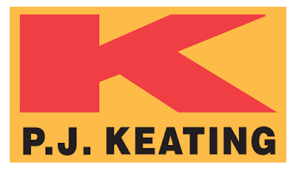News
U.S. EPA Releases Annual Toxic Release Inventory for Nation’s Pacific Southwest Region
Feb 11, 2020
SAN FRANCISCO – Today, the U.S. Environmental Protection Agency (EPA) announced the latest annual Toxics Release Inventory (TRI) National Analysis, covering 2018. Findings from this most recent publicly available report show an increase in recycling of TRI chemical wastes nationwide and indicate that companies continue to find ways to implement new source reduction activities and reduce the quantities of TRI chemicals they release into the environment.
“By providing the data in the TRI National Analysis, EPA is empowering communities to protect their environment and providing companies with the information they need to work toward a stronger future,” said EPA Administrator Andrew Wheeler. “The latest TRI data continues to demonstrate that under President Trump environmental stewardship and economic growth continue to go hand in hand.”
Along with the 2018 TRI National Analysis, EPA is publishing a new tool on the TRI website to help explain the data reported by the metal mining sector. EPA’s new interactive graphic—which was developed with input from stakeholders—explains how metal mines operate, and generally how and where releases of TRI-listed chemicals happen.
“The Toxics Release Inventory provides the public in America’s Pacific Southwest with important environmental data that can be used to learn more about facilities in their communities,” said Pacific Southwest Acting Regional Administrator Deborah Jordan. “Overall national trends in the data indicate facilities are recycling more, which is good for the economy and the environment in our region and across the U.S.”
In Nevada, 141 facilities reported 339 million pounds of TRI chemical releases for 2018, a 14 percent decrease from 2017. The highest releases in Nevada are driven by the mining sector, which reported large quantities contained in the ore and waste rock. In 2018, five TRI reporting facilities in Nevada implemented new source reduction activities.
“Management of ore and waste rock at modern Nevada mines is subject to rigorous permitting and inspection to protect water quality and public health,” said Nevada Division of Environmental Protection Administrator Greg Lovato. “Fortunately, it is well understood that the TRI data alone do not indicate whether the environment or the public is exposed to any of the listed chemicals. Safe management practices are required and enforced for the engineering design, permitting and construction of ore and waste rock facilities to ensure strong protection of Nevada’s air, water and land.”
In Arizona, 263 facilities reported 171 million pounds of TRI chemical releases for 2018, a 69 percent increase from 2017. The metal mining sector accounted for 74 percent of the state’s TRI chemical releases. After metal mining, the primary metals and electric utilities sectors reported the highest releases. In 2018, 14 facilities in Arizona implemented new source reduction activities (5 percent of all facilities in Arizona), including facilities in the chemical manufacturing, nonmetallic mineral products, primary metals, and fabricated metals sectors.
In California, 1,208 facilities reported 34.5 million pounds of TRI chemical releases for 2018, a 19 percent increase from 2017. The hazardous waste management, petroleum products, primary metals, and food manufacturing sectors reported the highest releases in the state. In 2018, 7 percent of facilities in California (81 facilities) implemented new source reduction activities. Most facilities reporting source reduction were in the fabricated metals or computers and electronics sectors.
In Hawaii, 31 facilities reported 2.9 million pounds of TRI chemical releases for 2018, a 4 percent decrease from 2017. The electric utilities sector, as well as the national security and petroleum products sectors, reported the highest releases in the state. The total quantity of production-related chemical waste managed by TRI facilities in Hawaii decreased by 38 percent (2.5 million pounds) since 2017, driven by decreases in the petroleum products sector. In 2018, two facilities in Hawaii implemented new source reduction activities.
This year’s National Analysis expands the focus on geographical trends in chemical waste management across the country. New features include profiles exploring the diversity of industrial operations in each EPA region and a closer look at data from the hazardous waste management sector and the aerospace manufacturing sector.
The National Analysis showcases industry practices for managing waste and reducing pollution at nearly 22,000 facilities that submitted TRI data for the calendar year 2018. EPA encourages facilities to learn from their counterparts’ best practices and adopt additional methods for reducing pollution.
To further highlight these industry best practices, EPA is holding events nationwide at facilities that implemented new source reduction activities. These facilities demonstrate how innovative projects can help industries reduce the generation of chemical pollution and improve their environmental performance.
2018 National Highlights:
-
Releases of TRI-covered chemicals into the environment from the manufacturing sector were lower than expected based on economic activity.
-
Facilities initiated 3,120 new activities to prevent or reduce the creation of chemical waste.
-
Nationally, the percent of industrial chemical waste that is recycled instead of released continued to increase.
Under the Emergency Planning and Community Right-to-Know Act (EPCRA), covered facilities must report their annual releases of TRI chemicals for the prior calendar year to EPA by July 1. EPA, states and tribes receive TRI data from facilities in industry sectors such as manufacturing, mining, electric utilities and commercial hazardous waste management. The Pollution Prevention Act also requires facilities to submit information on pollution prevention and other waste management activities of TRI chemicals.
To access the 2018 TRI National Analysis, including local data and analyses, visit www.epa.gov/trinationalanalysis.
Information on facility efforts to reduce TRI chemical releases is available at www.epa.gov/tri/p2.
Learn more about EPA’s Pacific Southwest Region. Connect with us on Facebook and on Twitter.
Professional Presentation









































































































